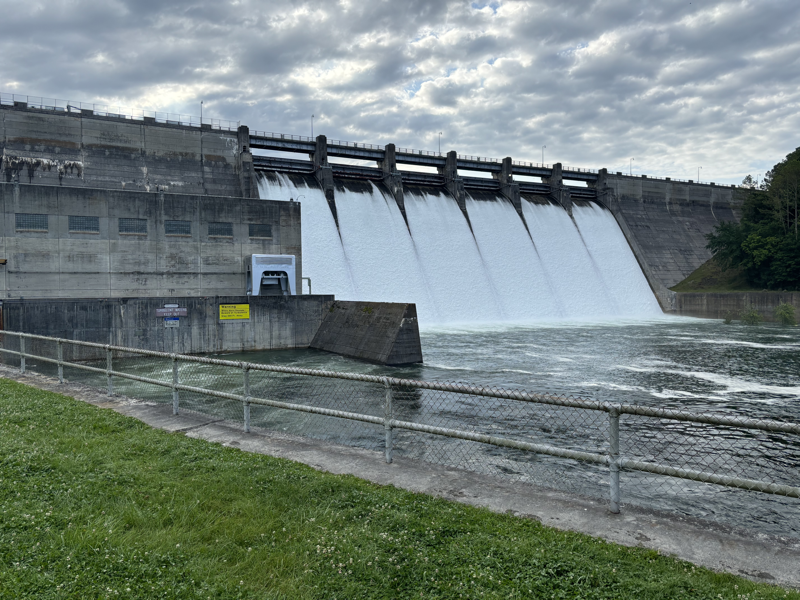Dale Hollow spillways open for only 11th time in 70 years

2024 marks the 7th time spilling has occurred in the 21st Century
By THOMAS P. WEAVER
Horizon Editor
CELINA-Water began flowing over, not through, Dale Hollow Dam for only the 11th time in 70 years here yesterday, as the U.S. Army Corps of Engineers used the measure to counteract the downpours of Memorial Day weekend, which jumped lake levels to an elevation four feet above normal summer pool.
Though the lake reached 655 feet above sea level (FASL) prior to the spillways being opened Tuesday, it was nowhere near the record level of 660.98 FASL set back in 1975, and it was five feet lower than three other times the reservoir crested above 660 FASL.
The last time that happened was just five years ago in 2019, but that was not the last time flood gates at the top of the historic structure were opened.
Spillways opened most recently in 2021, and they were also used consecutively in 2018 and 2019. Prior to that, water flowed through the spill gates three years in a row in 2009, 2010, and 2011—which remains an unprecedented occurrence.
Before the first of the seven times in the 21st century, it had been 20 years since spillways were opened in 1989, and they had only been used three times prior, including four years earlier in 1984.
The event also occurred in 1962 and 1975–the year the record water-level elevation was set, to make up the total of 11 spillway openings since the last hydropower unit came on line at the dam in 1953.
All three times Dale Hollow Lake reached 660 FASL or above, spillways were opened to quickly reduce levels before they reached the top of the flood gates—which have an elevation of 663 FASL.
The lake’s normal summer pool is 651 FASL, and normal fluctuation of the reservoir usually stays below a 20-foot range on average.
Record highs above 660 FASL are rare, and lows nearing 631 FASL have only been seen four times in history, with the record low being 631.1 FASL in 1956.
On average, Dale Hollow fluctuates from a springtime high of the low-650s to a wintertime low of 635 to 640 FASL or so, creating the less than 20-foot median range of the lake’s rise and fall.
